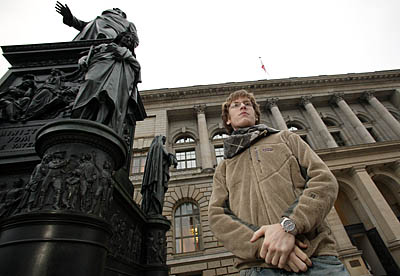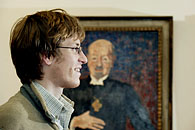Berlin Abgeordnetenhaus
Berlin Abgeordnetenhaus — by John Mulligan ’06
I was intimidated by the prospect of interviewing people at my project site. I didn’t know if my German lessons would carry me through the free-form conversations that I (half) hoped to have about the Berlin Abgeordnetenhaus (House of Representatives).

During World War II, the building was a social venue for Luftwaffe pilots. When the Berlin Wall went up, the Abgeordnetenhaus fronted part of the Death Strip, a no-man’s land designed to both reveal and trap those who might try to escape over the wall. An important East German symbol, the Abgeordnetenhaus almost became a communist monument.
I had a Gordian knot of histories before me, and little history myself with German. Perhaps my interviewees would do the work for me. “What does this building mean to you?” I asked, hoping for a penetrating answer to a cop-out question. “It’s the building for politicians,” offered one. “A pretty building,” ventured a pair, before giggling at me. It was a rocky start. It took better questions from me to gain more understanding of this building’s meaning, and I soon met helpful, kind, and, most importantly, talkative people.

In the end, understanding their place in Berlin was my real goal. The building was a mere gateway.